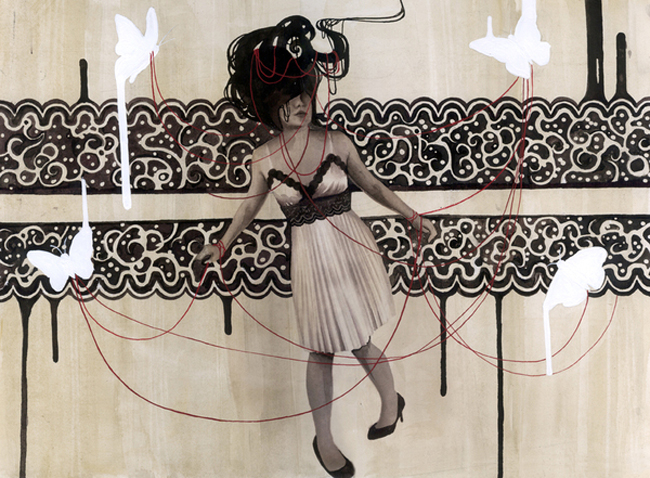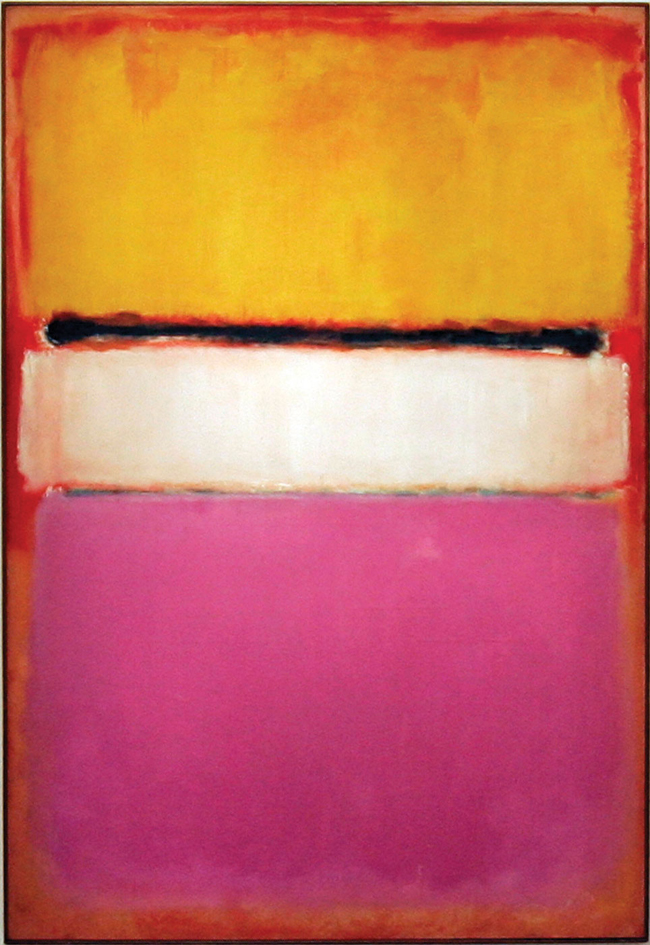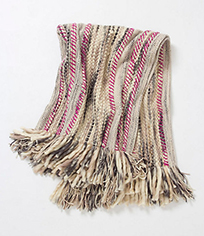
Recently there was a review made on Burnaway.org, an Atlanta-based visual arts website, on the current exhibit, "Fight or Flight" of artist Kelly McKernan at Beep Beep Gallery. The author, Jeremy Abernathy, brings up the question of meaning when it comes to art and the production of it. So in return, I shall pose these questions to you: Must an artist develop or conjure a "deeper meaning" behind their artwork? Or, rather, is there a value in artwork that does not have a complex and intricate manuscript of meaning?
For me to personally answer this question, I first recalled on my memories of taking various art classes in high school. Both of my art teachers were strict, and the majority of the students disliked them. I grieved terribly every time either of my instructors told me that my work was junk and that there was no substance behind it. Every time I turned in a series of photographs, I was also required to turn in a lengthy artist statement to accompany it. Though I despised these exercises and hated the harsh and relentless criticism, I would have to say now that those assignments have helped me better focus my artistic vision.
I must admit that since high school my "vision" has not quite developed, nor do I expect it to be. I am still a very inexperienced painter. Only recently was it that I began my passion of painting. Before then, I only did photography, and I had my focus there. Funny that I would write about this now, because I have been trying to develop the direction that I feel would compliment my talents, ideas, and person. But is it really necessary for me to develop a concept? I think so - not just for me, but for all artists. I think it is important to supplement artwork with meaning behind it.
On the other hand, there is art without meaning, but is it still meaningful? Before writing this post I saw on an art forum a rant of an artist about drawing butterflies. They stated that their instructor was disatisfied with their work due to the fact that the artist drew them for the sake of drawing a favored, pretty insect. Of course the drawing or watercolour is art. Is it meaningful, not really. Also, why would anyone be interested in art if it were only pretty and easy to look at? There are artist activists and protesters rolling in their graves by just the thought of meaningless, "pretty" art.
Even some artists whose work may seem simple and plain (or easy to construct) are immense with dimentions of meaning. For example, take a look at this piece below, entitled "White Center" by Mark Rothko.

For most people, I'm sure this looks simply like color smeared haphazardly on a canvas without a touch of depth. Quite on the contrary. Rothko's signature "multiform" pieces were conceived by his own idea of spiritual experiences or expressions of life.
Art can be exquisitely beautiful or terrifyingly brash and captivating, but without a purpose or story, what impact can it leave with the audience? When I see a pretty picture I dote upon it for a day or so, then move on. However, when I discover a work of art with a definite story, an idea, a deeper meaning, or the journey of an artist, I remember it and savor it in my mind's eye. To create art with no full meaning behind it is like eating dinner without dessert afterwards. There is a beauty in understanding how and why you have created your artwork. Allow your audience to view you and your work as more than just art, but a real person with real beliefs, ideals, and life.
In regards to Kelly McKernan, I think her artwork is lovely, and I favor the theme of her show, "Fight or Flight". Perhaps the answer would have been to delve into the idea and pin down the original thought that entranced her to begin the journey of her pieces. It is unfair to put so much labor into a series, without a concrete thought on why they are tied together.
What do you think? Let me know!


I'm glad this conversation has continued. After thinking about all of the comments and responses to Jeremy's original review, I've come to one conclusion that I'd like to state. Art will always have some sort of meaning to its viewer, but if the art is created without intended meaning, it risks being misinterpreted. With this in mind, I think that there is obviously meaning that can be interpreted from Kelly's motifs (the doilies suggest domesticity, the gears could suggest process or routine) and her biggest mistake was admitting up front that they were chosen for aesthetic purposes. As much as I despise artists' claims that their work is "up for interpretation" I'd take that over a neglect for interpretation every time.
ReplyDeleteI agree completely. Thank you so much for expressing your thoughts, Mike!
ReplyDelete"her biggest mistake was admitting up front that they were chosen for aesthetic purposes. As much as I despise artists' claims that their work is "up for interpretation" I'd take that over a neglect for interpretation every time."
ReplyDeleteNot too sure who was talking to who and got that information, but that's completely inaccurate. (And to set something straight - Jeremy Abernathy took my words out of context for his review and I was not properly represented.)
I never stated that the so-called visual motifs were empty of symbolism. The goal of the series was to work subconsciously with those symbols within the context of the topic I was attempting to explore... in the case of the series, and as stated in the statement (which everyone seems to be ignoring), the symbols were chosen with a stream-of-consciousness approach, akin to how a dream is formed. My job, with my artwork as the vehicle, was to interpret the symbols that found themselves within each piece, and determine (or interpret, if you will) my reaction of flight and/or fight to the situation at hand.
Since this is the only place I am stating these things (mostly in response to Jeremy's review and the opinions of others), I will add that I believe I was successful in my goal. I learned the ways in which fight and flight manifest themselves within me: withdrawal, disengagement, idealism, and simulated agreement are my "flight" responses, and passive-aggressiveness and manipulation are my "fight" responses.
However, it was not as important to me to convey my own discoveries in the work as it was to have the work completed, look aesthetically presentable, and still fit within my known style. I will admit that the pressure of "Fight or Flight" being my first solo show was a little overwhelming. Creating the work for the show, not for myself, was my mistake.
Finally, I DO appreciate the comments, and criticism alike, from Jeremy Abernathy and others. However, I don't feel that I was fairly represented in his review. He misinterpreted my own honesty and modesty in regards to how I feel about the series, and that I truly was not completely happy with the pieces as a whole. I only stated that the symbolism was chosen subconsciously and without much logical consideration. They were not arbitrary choices.
With all of that said, I have had a negative, yet sobering experience from all of this. I have never been interested in being viewed as an artist with something significant to say. I create what I create because I simply love the act of creation. The only reason I ever bothered with attaching any meaning and significance to my work is because there is a ridiculous art-societal pressure to have to say something significant. That isn't to say that my work up until this point was ever in vain, but my heart is in the creation and discovery, not in the message. So, I suppose it's a shame that the pressure to have a ground-breaking concept attached to my work (or anyone's work) leaves a bad taste in my mouth. It should come naturally. For me, it is in personal discovery. My viewers can take it or leave it. I prefer that they attach their own interpretation of the symbolism to the work and enjoy their own story, not mine.
(Thank you Ciara for your blog entry and your thoughts regarding the work, I do appreciate it).